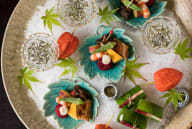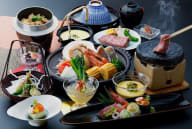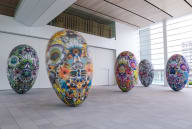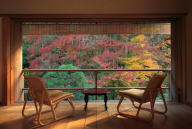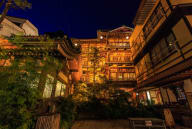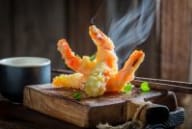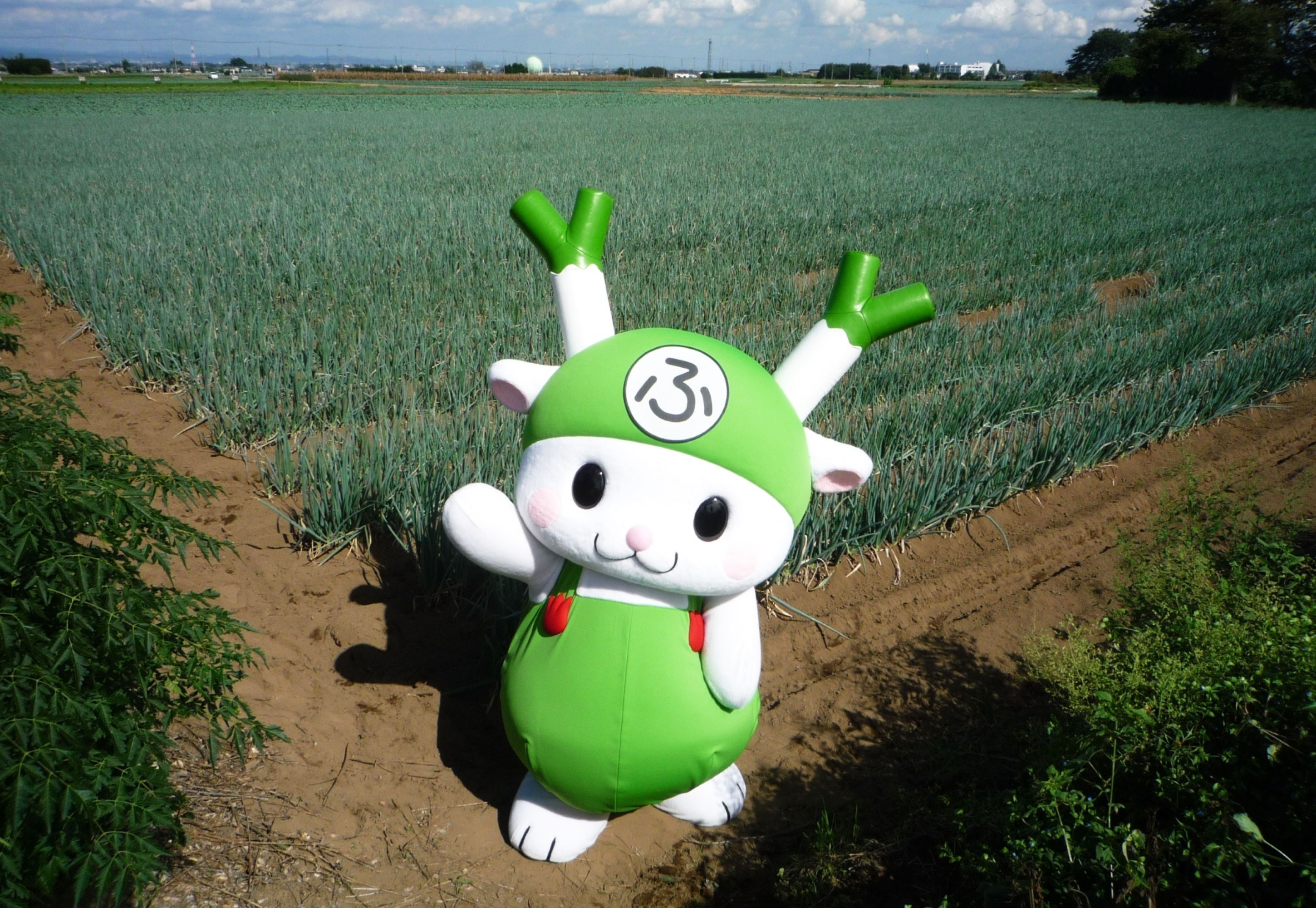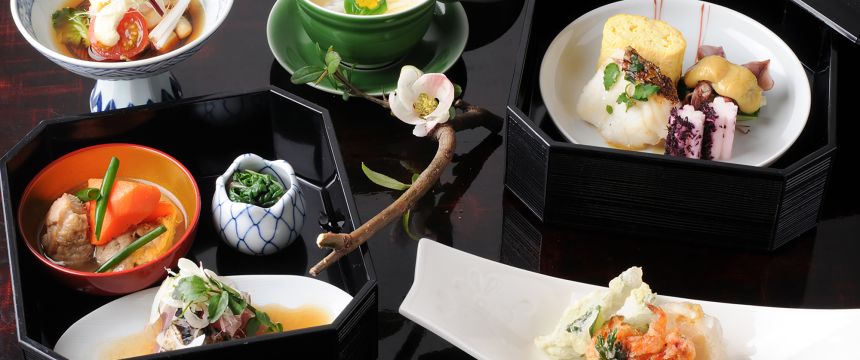Tsubame City, Niigata Prefecture – Hokuriku Shinetsu

For more than 100 years, the city of Tsubame, in Niigata Prefecture, has been the undisputed home in Japan of metal cutlery, as well as related metalwork, such as the Japanese kitchen knives that are in demand the world over. Small ateliers and factories dot the scenic city, each with a character all its own. Some have histories stretching back hundreds of years, while others stand on the cutting edge of tech. So how did Tsubame rise to become not only the leader in Japanese metalwork, but also a place that is setting a new global standard in quality and creativity?
The answer is one you can experience for yourself, in the open factories, welcoming historic ateliers, and local restaurants that take pride in using homegrown talent to prepare and present their cuisine.
Working Against the Odds

The Tsubame story is all the more remarkable when you consider that, prior to the turn of the last century, metal tableware such as knives and forks were not traditionally found on the Japanese dinner table. Yet, by 1950, Tsubame had become the world leader in stainless-steel cutlery—a legacy that continues to this day.

The best place to track the full story is the Tsubame Industrial Materials Museum, where you can see for yourself the extensive history of copperware. It was here in the Tsubame area, first in the 17th century with Japanese style nails, and then in the 18th century, with yasuri files, that practical items began to set the stage for an industry that would later boast exquisite copperware vessels and luxurious intricately detailed kiseru (traditional Japanese smoking pipes), which were carried by wealthy merchants and the upper echelons of society.

area being landlocked, much of the landmass was exposed to frequent flooding in the 18th century through to the beginning of the 20th century. With farming on a significant scale all but impossible, the people of Tsubame had to turn to another industry—and to say that they got good at it would be an understatement.

Fast forward to the present day and the reason Tsubame remains a powerhouse that provides more than 90% of domestic tableware is still a human one. The area is home to craftspeople whose expertise has been passed down over the generations and adapted to the contemporary table.
Be Part of the Living Tradition

You can be part of this story in the Workshop Hall, where local artisans are on hand to teach a number of disciplines that have been important in the history of Tsubame. From the ancient art of tsuchime, whereby copper vessels are decorated with an attractive dimpling texture created by hammering, right to the latest titanium plating technology that can give metal a futuristic flourish, there are many accessible ways to learn the techniques of Tsubame.

Almost everything on offer is available to take home the same day and can be completed within an hour. The tsuchime hammering process is particularly absorbing, and you can create something to be proud of under the instruction of the museum’s resident experts. In Tsubame, each copperware design starts from a flat panel of copper and the shape is hammered over time as it is gradually compacted and thinned. Here you start with a cup shape, so there is very little room to go astray, but you can still impart a lot of character in your design.

Attempting a random or very consistent pattern is the best option for beginners. Once you try to create a pattern of different sized dimples using varied strengths of blow, then you see the real difficulty of this artisanal craft. Looking at masterpieces in the museum halls after completing your own gives you a real appreciation for what goes into every last blow of the hammer.
More Than 200 Years in the Making

Now that you know what goes into Tsubame metalwork, it is time to visit one of the most prestigious practitioners of tsuchime, as well as the whole hammered copperware construction method knows as tsuki-doki. Gyokusendo was founded in 1816, so they have seen much of Tsubame’s history with their own eyes. Their open factory and showroom holds a century of history and is a nationally recognized important cultural property.


Tours are available multiple times a day or by appointment, and you will soon be ushered into a world of busy furnaces where copper is heated before being pounded with utter precision and passion by the many artisans.

The building is a fantastic sight in and of itself, as are the magnificent range of hammers, anvils, and chisels, each with a highly specific purpose.

From there, designs are patinated in a number of darkening solutions—most either acidic or sulfurous—that can be used to achieve different colors or gradients. Then comes polishing which again, is used to bring out a range of colors and finishes.

In Gyokusendo’s masterful hands, mundane metals are transformed to reveal stunning colors, waves, and patterns—to the point where you may need reminding that these are not ornaments but rather practical tableware that can be brought into your daily life.
The Art of the Blade

Moving on to a more contemporary representative of Tsubame, TOJIRO was founded in 1955, and is best known for their steel kitchen knives.

Their output blurs the line between tradition and progress, building on the very same clad steel methods that have made Japanese katana swords the stuff of legend—and they are always evolving their production methods to edge ever closer to elusive perfection.

While cutting-edge machines and technology are important—and TOJIRO’s factory is rife with both—the instincts of their craftspeople are equally valued. You might spot artisans working with their own handmade tools, and notice that even the chairs they sit on while working might include their own adjustments. Again, it is this human touch in pursuing greater heights that seems to encapsulate the Tsubame spirit.

You can see this for yourself at TOJIRO at their open factory and gallery which is available to tour without prior appointment. An average visit is a blur of pounding steel, as the material is folded over like a samurai’s katana—sparks flying in the Forging Cabin where you can see how Japanese kitchen knives were made without modern technology.

Next is the knife factory, where mass production methods are on display. The craftsperson is always present because, even though technology makes aspects of the process easier, there are machines that take hours to set up and calibrated lest an entire run be wasted.

The Knife Atelier is where two worlds collide, and the technology meets handcrafting. Here is where TOJIRO’s custom knives are made to exacting customer or chef standards, and it is awe-inspiring to see how many hands each knife passes through—and how many steps are involved—before it is finally finished (and often engraved with the new owner’s name).

The craftspeople are surprisingly young, on the whole, with many women being attracted to the profession in recent years. Standing in the gallery at the end of the tour, it is easy to see the allure.
Taste the Tsubame Difference

Seeing the labor of love that goes into tableware and knives respectively is only half the picture. While they are more than worthy of appreciation in their own rights, these utensils are also made to play their part in Japanese cuisine.
Tableware provides not only an attractive presentation for the meal, but also plays an important role in the sensory experience beyond the visual. Anyone who has drunk even plain water from a copper cup knows that it just tastes clearer. Likewise, fish and meat cut with the minimal friction of a carefully sharpened knife yield a different flavor.

A trip to the kitchen reveals the knives pivotal role in food preparation. With occasional sharpening, a quality knife can easily see a decade of active service. The act of polishing and taking care of your own knives is very much part of the chef’s code in Japan, as is maintaining a collection suitable for all menus. There are even knives dedicated to a single variety of fish, such as the hamo (pike conger), a fish so difficult to prepare that it commands its very own dedicated knife.

Back to the dinner table where Japanese sake is served in hammered copperwork cups to toast the feast!
For the perfect experience that combines tech and tradition to create a memento that you can take home, a trip to Tsubame is a must. Even though Tsubame metalwork is widely available in department stores throughout Japan, once you have actually seen it being made—or tried your own hand at it—you are sure to treasure it as it becomes an indispensable part of your dinner setting.
Contact Information
Tsubame City Industrial Materials Museum
4330-1 Omagari, Tsubame, Niigata 959-1263
Gyokusendo
2-2-21 Chuo-Dori, Tsubame, Niigata 959-1244
TOJIRO
9-5 Yoshida-Higashisakae, Tsubame, Niigata 959-0232
Meiji-ya
4-9-60 Akibachou, Tsubame, Niigata 959-1261
How to Get There
Tsubame is located in Niigata Prefecture, due north of Tokyo, on the western coast of the country facing the Sea of Japan. It is easily accessible on the Joetsu Shinkansen Line which will take you from either Tokyo or Ueno Stations to the main hub of Tsubame-Sanjo Station in less than two hours. Slightly confusingly, the station is the main hub to the cities of Tsubame and Sanjo, and the area as a whole is often referred to as “Tsubame-Sanjo” or even “Tsubamesanjo,” so watch out for those different names.
Recommended Itineraries
Tsubame can be linked to routes exploring the Hokuriku region that take you west along the Sea of Japan, or as the gateway to exploring northern Japan. But don’t be so quick to leave! Located in the center of the prefecture, Tsubame is the gateway to Niigata, and is itself a hub of industrial and historical heritage, countless crafts, all amongst beautiful verdant scenery. Niigata Prefecture, as a whole, is known as a capital for gastronomy, with its rice, and sake (rice wine) considered some of Japan’s finest. If there is room on your itinerary, experiencing the unique culture of Sado Island is a must. Don’t miss the exceptional seafood, cute tub-boats bobbing off the coast, and tours into the depths of the historic Sado Kinzan gold mine.
Related Links
Tsubame City Industrial Materials Museum (English)
TOJIRO (English)
Map
Featured Cuisine
Japanese kitchen knives, tableware, and cutlery are a vital part of Japanese cuisine. The shape of the various knives is a direct response to the ingredients of the dishes and the techniques used by the chef. The result is washoki (Japanese tableware) that itself is a response to the cuisine, where the size of the plate or depth of the bowl is dictated by the food it will hold. Deconstructing the dinner table and appreciating each part in isolation is the key to truly unlocking Japanese cuisine.
-
Author
Author: Samuel
Originally from the UK, Samuel studied Japanese Studies in the UK before completing his post-graduate studies in Japan. Now with over a decade of writing about Japan for a number of publications, and teaching about Japanese art and design at university, he hopes to bring his love of Japan to a wide audience. His favorite Japanese food is takoyaki as the perfect street snack.
All information is correct as of the time of writing.
Please check for the latest information before you travel.





















